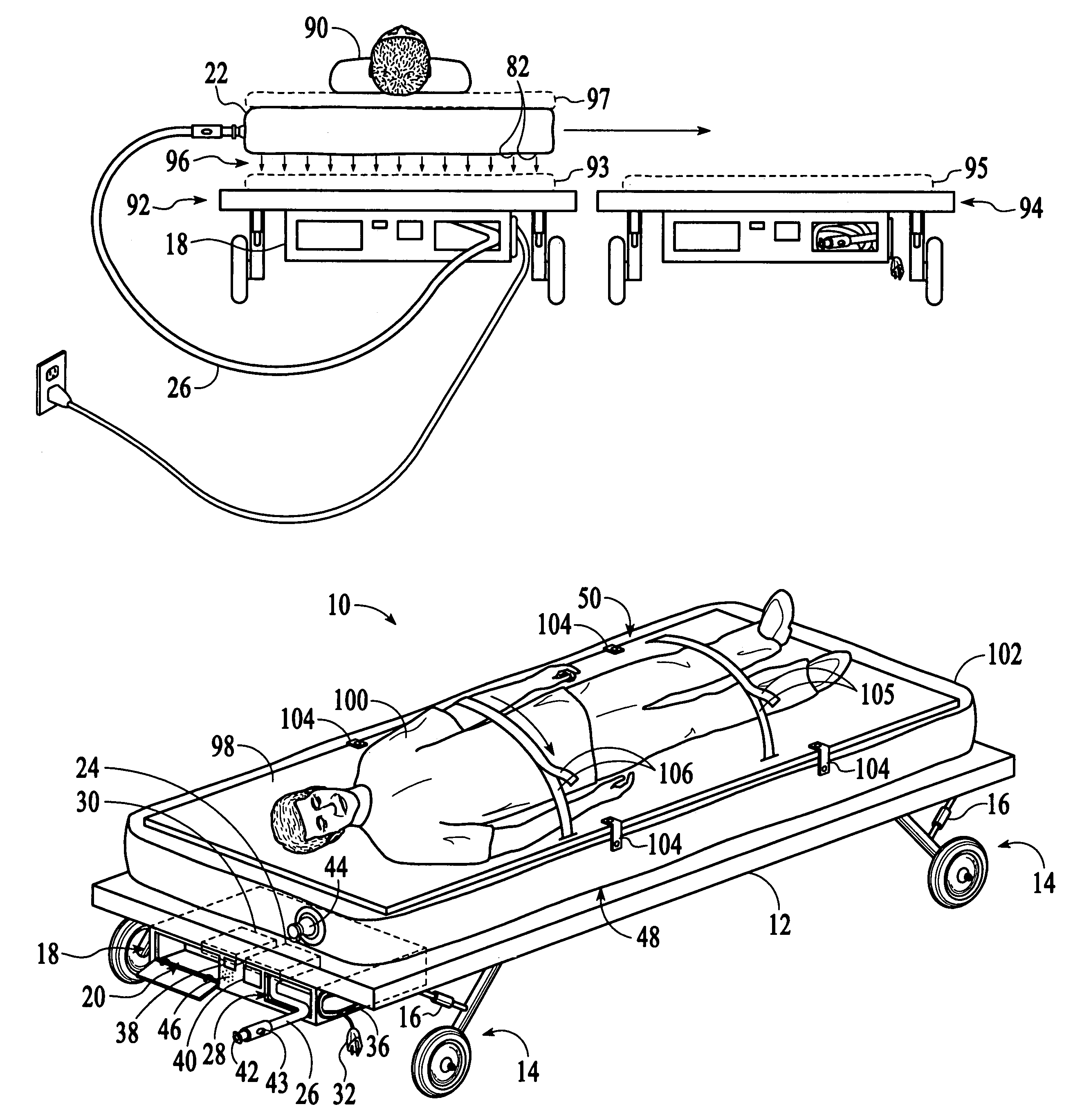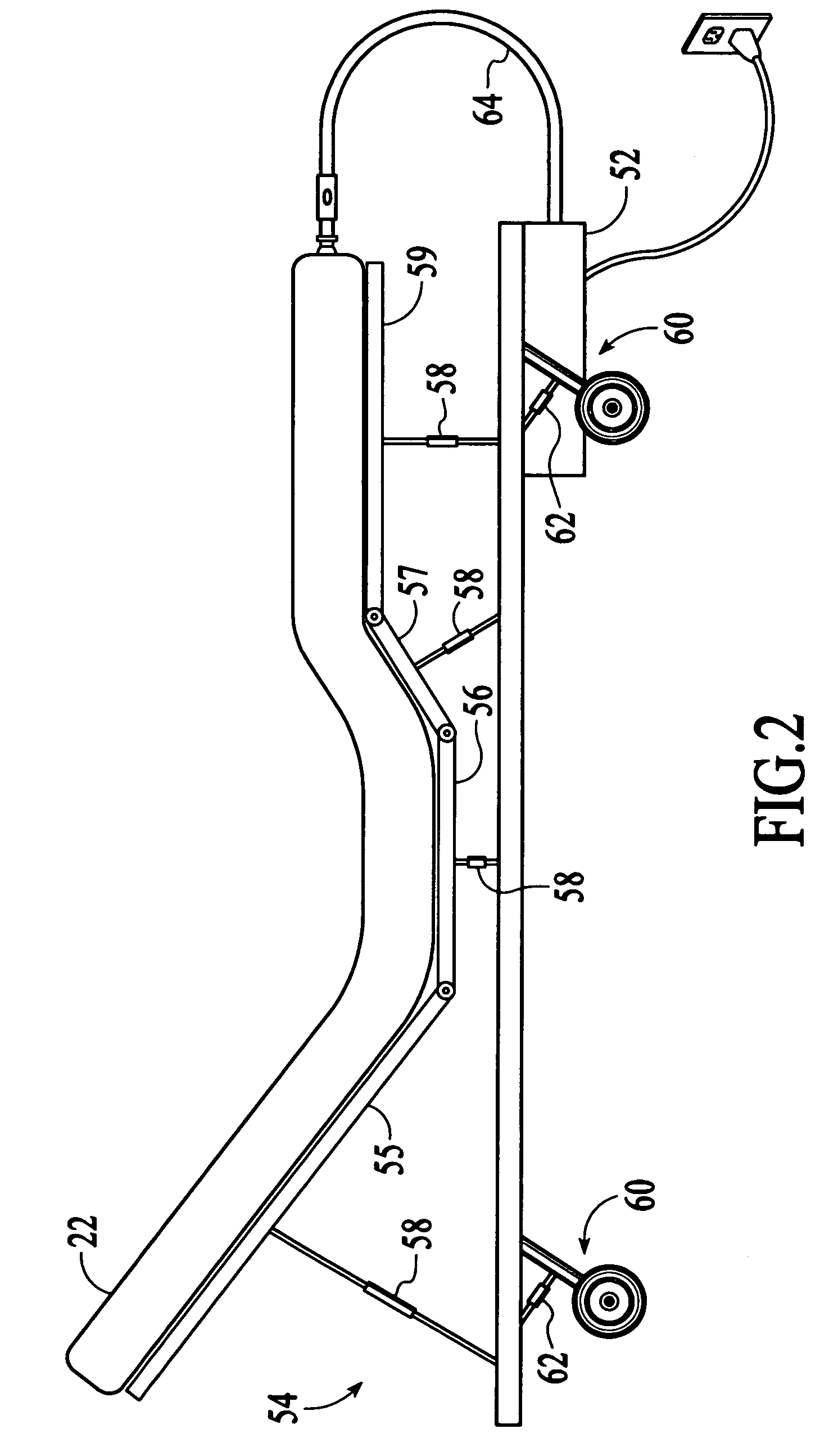Method and apparatus for transferring patients
a patient and patient technology, applied in the field of apparatus for transferring patients, can solve the problems of affecting the comfort of patients, and the body of patients may not be able to withstand the stresses and strains of patients, and achieve the challenge of moving a patient with minimal handling
- Summary
- Abstract
- Description
- Claims
- Application Information
AI Technical Summary
Benefits of technology
Problems solved by technology
Method used
Image
Examples
Embodiment Construction
[0019]An embodiment of the system 10 of the present invention is shown in FIG. 1 as applied to a stretcher 12. The stretcher 12 can be of any type, such as used in a hospital or an ambulance, and can have fixed height legs 14 or adjustable height as indicated symbolically by adjusters 16. According to the system of the present invention, a patient bed illustrated as a stretcher 12 in FIG. 1 is assembled with an air mattress air supply system 18 attached. The term “air” as used in the present disclosure is meant to refer to air or any other gas that can be used to inflate an inflatable mattress. “Air mattress” therefore refers to a mattress that can be inflated with any such gas. Although the bed is illustrated as a stretcher, the present invention includes any type of bed / surface for supporting a patient, and will be referred to as a bed apparatus including any form of patient support apparatus, such as a stretcher or hospital bed, etc. The supply system 18 has a compartment 20 for ...
PUM
 Login to View More
Login to View More Abstract
Description
Claims
Application Information
 Login to View More
Login to View More - R&D
- Intellectual Property
- Life Sciences
- Materials
- Tech Scout
- Unparalleled Data Quality
- Higher Quality Content
- 60% Fewer Hallucinations
Browse by: Latest US Patents, China's latest patents, Technical Efficacy Thesaurus, Application Domain, Technology Topic, Popular Technical Reports.
© 2025 PatSnap. All rights reserved.Legal|Privacy policy|Modern Slavery Act Transparency Statement|Sitemap|About US| Contact US: help@patsnap.com



